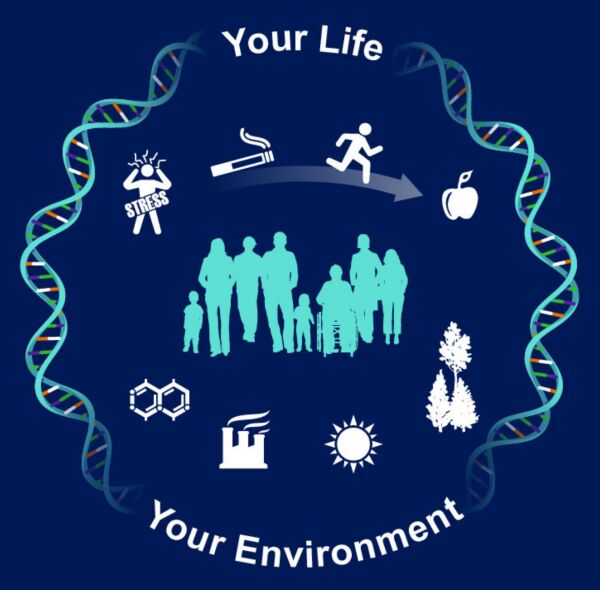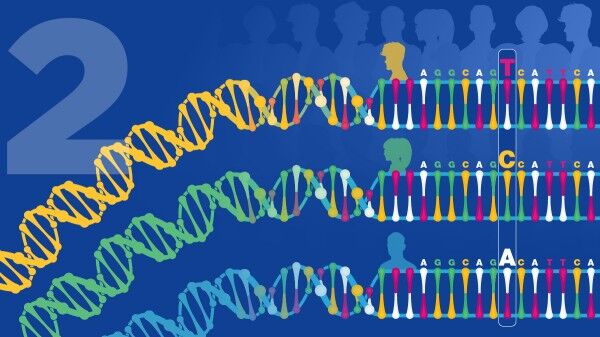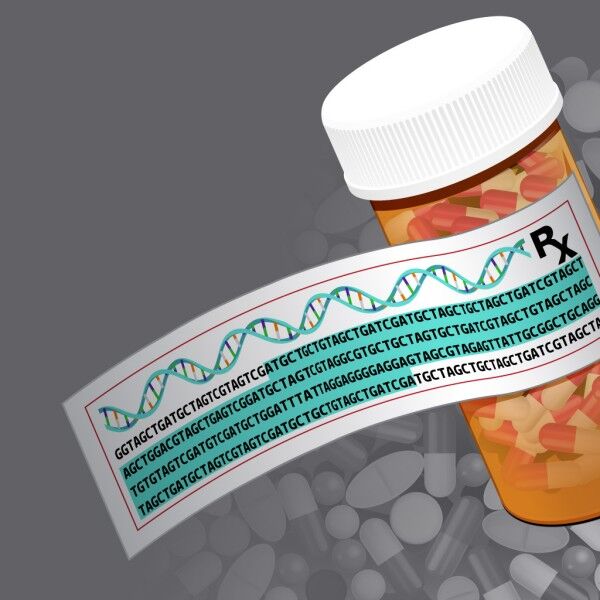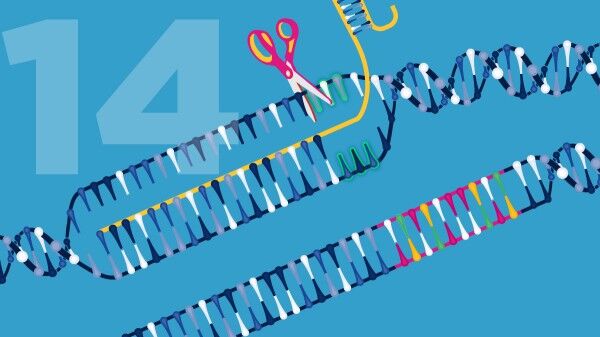What is bioinformatics, and why is it important?
Learning objectives: Get an overall understanding of bioinformatics resources.
Introduction

Bioinformatics is a fascinating interdisciplinary field that combines biology, computer science, and statistics to explore the mysteries of life. It employs computational tools and techniques to unravel the secrets of biological phenomena, such as the structure, function, and evolution of DNA, RNA, and proteins. Researchers use algorithms, databases, and software tools to manage and interpret vast biological data in this rapidly advancing field. By combining insights from different sources, bioinformatics provides a comprehensive view of biological systems, unlocking new drug targets, personalized treatments, and disease diagnosis and treatment.
Definition of Bioinformatics
To understand bioinformatics, it is essential to know its definition. Bioinformatics refers to using computational tools and methods to process, analyze, and interpret biological data such as DNA, RNA, and protein sequences. Bioinformatics is concerned with developing algorithms, databases, and software tools that can help analyze biological data. It relies heavily on statistics and computer science to manage and interpret large datasets.
Check out a more comperensive definition of bioinformatics.
Importance of Bioinformatics
Bioinformatics is the tool that unlocks the secrets of life. It is an interdisciplinary field that combines biology, computer science, and statistics to explore the mysteries of living systems. By integrating data from different sources, bioinformatics provides a comprehensive view of biological processes, which helps in identifying new targets for drug development and improving disease diagnosis and treatment. It enables researchers to analyze vast amounts of biological data that would be impossible to process manually, providing insights into the complex interactions of living systems. Bioinformatics is a fascinating field that promises to revolutionize healthcare and agriculture, unlocking the secrets of life and discovering new ways to improve human health and well-being.
Applications of Bioinformatics
Bioinformatics has numerous applications in various fields, including genomics, proteomics, drug discovery, and personalized medicine. It helps identify disease-causing genes, predicts the potential side effects of drugs, and designs new drugs with greater efficacy and specificity.
Genomics

One of the most significant applications of bioinformatics is in genomics, which involves the study of an organism's entire genome. Genomics has revolutionized the field of biology, enabling researchers to understand the genetic basis of diseases and develop new treatments. Bioinformatics tools such as genome sequencing, assembly, and annotation have made it possible to analyze the entire genome of an organism and identify genetic variations that may be associated with diseases.
The study of genomics is like holding the key to the mysteries of life. It's a captivating field that has changed how we see living organisms. Genomics is all about sequencing an organism's entire genome, including all its DNA, genes, and non-coding regions. The first genome was sequenced in 1977 by Fred Sanger and his team, which was the genome of the bacteriophage φX174 (Take a look at Searching for DNA sequencing methods ). Since then, technological advancements have made it possible to sequence the entire human genome, which contains an astonishing 3 billion base pairs.
The implications of genomics are astounding. By studying an organism's entire genome, researchers can identify genetic variations that may be associated with diseases. In other words, it's like searching for a needle in a haystack. But with genomics, the needle is easily found, opening doors for developing personalized medicine. Doctors can now develop treatments tailored to a patient's unique genetic makeup.
Cancer research is one of the most significant applications of genomics. By sequencing the entire genome of cancer cells, researchers can identify genetic mutations that may drive cancer's growth. This allows doctors to develop personalized treatments that target specific genetic mutations, improving patient outcomes and quality of life.
But genomics isn't just about understanding human diseases. It has also played a vital role in understanding the evolutionary history of living systems. By sequencing the genomes of different species, researchers can identify evolutionary relationships between organisms and reconstruct phylogenetic trees. It's like piecing together a complex puzzle of life, helping us understand how different species are related to each other.
Additionally, genomics has revolutionized agriculture. By sequencing the genomes of crops and livestock, researchers can identify genetic variations associated with desirable traits, such as increased yield or disease resistance. This has led to a significant increase in food production, ensuring food security for millions globally.
Genomics is a key that unlocks the secrets of how living organisms function, and its implications are enormous. With the help of genomics, we can develop personalized treatments, understand the evolutionary history of living systems, and revolutionize agriculture. The future of genomics is bright, and we can't wait to see what groundbreaking discoveries lie ahead.
Proteomics: Unlocking the Secrets of the Human Body

Proteomics is a fascinating bioinformatics application that has revolutionized how we understand the role of proteins in biological processes. By studying an organism's entire set of proteins, researchers can identify disease biomarkers, which can be used for early diagnosis and treatment. Bioinformatics tools such as protein structure prediction and modeling have made it possible to unlock the secrets of protein structure and function, providing insight into their critical role in biological processes. Imagine the potential of identifying disease biomarkers before symptoms arise, enabling earlier diagnosis and treatment. With bioinformatics, this is not just a dream but a reality transforming medicine.
Proteins are the building blocks of life, and understanding their role in biological processes is essential for developing new treatments for diseases. Proteomics is the field of bioinformatics that has revolutionized how we view the role of proteins in living systems. By studying an entire set of proteins in an organism, researchers can unlock the secrets of how they interact with each other and other molecules, providing insight into their critical role in biological processes.
Proteomics has opened new doors for personalized medicine, enabling doctors to develop customized treatments tailored to a patient's unique genetic makeup. It has also played a pivotal role in drug discovery, enabling researchers to identify new drug targets and develop safer and more effective drugs. With bioinformatics tools like molecular docking and virtual screening, proteomics has made it possible to analyze vast amounts of biological data quickly and efficiently, providing new insights into the complex interactions of living systems.
One of the most significant applications of proteomics is in cancer research. Proteomics has enabled researchers to identify overexpressed proteins in cancer cells, which can be targeted for new cancer treatments. By studying the entire set of proteins in cancer cells, researchers can identify new drug targets and develop more effective cancer treatments.
Proteomics is a fascinating field that promises to revolutionize healthcare, enabling more personalized treatments and improved patient outcomes. Imagine receiving a treatment plan designed specifically for you, considering your unique genetic makeup. With proteomics, this is a dream and a reality transforming medicine.
So, as we continue to unlock the mysteries of the human body, it's clear that proteomics is an essential tool for advancing our understanding of biological systems. Its potential is enormous, and its applications are far-reaching, promising to revolutionize healthcare and improve the quality of life for millions. The future of proteomics looks bright, and we can't wait to see what groundbreaking discoveries lie ahead!
Drug Discovery

Bioinformatics has revolutionized drug discovery using advanced computational tools to identify potential drug candidates and predict their efficacy and toxicity. With the help of bioinformatics tools like molecular docking and virtual screening, researchers can now analyze vast amounts of biological data to unlock the secrets of how drugs interact with biological systems. By combining insights from different sources, bioinformatics provides a comprehensive view of drug targets, enabling the development of new drugs with greater efficacy and specificity. Thanks to bioinformatics, the future of drug discovery looks bright, promising more personalized treatments and improved patient outcomes.
The field of drug discovery has long been a challenging and complicated process, often taking years and requiring billions of dollars in investments. But, with the recent advancements in bioinformatics, researchers have revolutionized how we discover new drugs.
The first step in the drug discovery process is identifying a suitable target, a protein, enzyme, or receptor that plays a critical role in the disease process. This is where bioinformatics comes into play. Researchers can use computational tools like protein structure prediction and modeling to unlock the secrets of protein structure and function, providing insight into their critical role in biological processes.
Once a target has been identified, the next step is to screen millions of compounds to find ones that interact with the target. This is where virtual screening comes into play. Bioinformatics tools have made it possible to analyze vast amounts of biological data quickly and efficiently, identifying potential drug candidates more efficiently than ever before.
But, identifying potential drug candidates is just the beginning. The drugs must undergo extensive testing to determine their efficacy and toxicity, which involves testing them on cells, tissues, and animal models to determine their safety and effectiveness. Bioinformatics tools like pharmacokinetics and pharmacodynamics have made it possible to predict how drugs will behave in the human body, enabling researchers to develop safer and more effective drugs.
Finally, the drugs must obtain regulatory approval, which involves submitting extensive data to regulatory agencies like the FDA or EMA, demonstrating the safety and efficacy of the drug. This is where bioinformatics tools like clinical trial design and data analysis have made it possible to design better clinical trials and analyze data more efficiently, speeding up the approval process and bringing new drugs to market faster.
Thanks to bioinformatics, the future of drug discovery looks brighter than ever, promising more personalized treatments and improved patient outcomes. Developing new drugs is a long and expensive process. Still, with bioinformatics, researchers can analyze vast amounts of biological data quickly and efficiently, unlocking the secrets of how drugs interact with biological systems.
So, as we continue to unlock the mysteries of the human body, it's clear that the future of drug discovery is inextricably linked to the power of bioinformatics. Who knows what groundbreaking treatments and cures we will discover next? The possibilities are endless, and the future looks brighter than ever!
Personalized Medicine

Bioinformatics has revolutionized personalized medicine by using patients' genetic information to develop customized treatments. With the help of genome-wide association studies and pharmacogenomics, bioinformatics has enabled identifying genetic variations associated with diseases and the prediction of a patient's response to specific drugs. Imagine a future where your medical treatment plan is tailored to your unique genetic makeup, ensuring the best possible outcome. Thanks to bioinformatics, this is not just a dream but a reality transforming medicine.
The concept of personalized medicine is not new. Physicians have long recognized that patients respond differently to treatments. However, recent advances in genomics and bioinformatics have made it possible to develop personalized treatments on a large scale. Researchers can identify biomarkers that predict a patient's response to a specific treatment by analyzing vast amounts of genetic data. This enables doctors to develop a personalized treatment plan tailored to the patient's unique genetic makeup.
However, by leveraging the power of genomics and bioinformatics, doctors can now provide treatments tailor-made to a patient's unique genetic makeup. Imagine receiving a treatment plan designed specifically for you, considering your genetic predisposition to certain diseases and conditions. With personalized medicine, this is not just a dream but a reality that promises to improve patient outcomes and quality of life.
The benefits of personalized medicine are manifold. Doctors can ensure better outcomes with fewer side effects by providing customized treatments to a patient's unique needs. This reduces the burden on patients and healthcare systems, freeing up resources for other important areas. Moreover, personalized medicine enables doctors to identify diseases earlier, improving patient outcomes and quality of life.
With advances in technology, personalized medicine is becoming more accessible than ever before. Genome sequencing costs are dropping rapidly, making it easier and cheaper to sequence patients' genomes. As the field of bioinformatics grows, we expect to see even more innovative treatments tailored to individual patients' needs.
Evolutionary Biology

Bioinformatics has not only revolutionized healthcare and personalized medicine, but it has also made significant contributions to evolutionary biology. Bioinformaticians can reconstruct phylogenetic trees and identify evolutionary relationships between organisms by analyzing vast biological data with advanced computational tools. Tools like sequence alignment and phylogenetic analysis have provided insights into the patterns of evolutionary history. With bioinformatics, we can unlock the secrets of how life has evolved and discover new ways to improve our understanding of the world. Imagine tracing the evolutionary history of all living organisms and discovering how they are connected. Bioinformatics is making this a reality, providing a new perspective on how we view the diversity of life on our planet.
Evolutionary biology is a captivating field that delves into the mysteries of life's diversity. It seeks to unravel how living organisms have evolved from the earliest single-celled organisms to the current complex multicellular organisms. Evolutionary biology is concerned with understanding the mechanisms of evolution, such as natural selection and genetic drift, and how they have shaped the diversity of living systems.
One of the most fascinating aspects of evolutionary biology is its interdisciplinary nature. It draws on insights from diverse fields, such as genetics, ecology, and paleontology, to provide a comprehensive view of life's evolution. By combining insights from different sources, evolutionary biology provides a holistic view of how living organisms have adapted to their environments, unlocking new insights into the mysteries of life.
Evolutionary biology has numerous practical applications, from understanding the evolutionary history of species to developing new treatments for diseases. Its impact on the field of medicine is particularly significant. Researchers can identify drug targets and develop more effective treatments by studying the evolutionary history of diseases. Consider this - by studying the evolutionary history of viruses, researchers can identify genetic mutations that allow them to evade the immune system, enabling the development of new antiviral drugs.
Evolutionary biology has also played a pivotal role in conservation biology. By studying the evolutionary history of species, researchers can identify genetic diversity within populations, enabling them to develop better conservation strategies. For example, by studying the genetic diversity of a species, researchers can identify at-risk populations and prioritize conservation efforts to protect them.
Furthermore, evolutionary biology has provided a fascinating insight into the history of life on our planet. By studying the fossil record, researchers can reconstruct the evolutionary history of different species and understand how they have adapted to changing environments over time. This has provided new insights into the mechanisms of evolution and how living organisms have evolved to their current forms.
As technology advances, the future of evolutionary biology looks incredibly bright. With new technologies and computational tools, we can study the diversity of life on our planet more efficiently than ever before. By combining insights from different fields, evolutionary biology promises to unlock new secrets of life and provide new insights into the mechanisms of evolution.
Agriculture

Bioinformatics has also played a pivotal role in agriculture. By analyzing the genomes of crops and livestock, bioinformaticians can identify genes that confer resistance to diseases and develop innovative ways to improve crop yields. This has led to a significant increase in food production, ensuring food security for millions globally. Thanks to bioinformatics, researchers have unlocked the mysteries of the genetic basis of plant and animal diseases and opened new doors for sustainable agriculture. Imagine a future where we can cultivate crops resistant to diseases and pests, leading to healthier and more abundant food supplies. Bioinformatics is making this a reality, providing hope for a brighter future for our planet.
Bioinformatics has been a game-changer in agriculture, and its impact on food production has been nothing short of miraculous. Bioinformaticians have identified genes that confer resistance to diseases and pests by analyzing the genomes of crops and livestock, leading to healthier and more abundant food supplies.
But that's not all. Bioinformatics has also helped develop new plant varieties that thrive in adverse conditions like drought and salinity. By analyzing the genomes of wild plants that have adapted to these conditions, scientists have identified genes that enable plants to survive and flourish, no matter what the environment throws their way.
Moreover, bioinformatics has provided new insights into the genetic diversity of crops and livestock. By analyzing the genomes of different varieties of crops and livestock, bioinformaticians can identify genetic variations associated with desirable traits, such as increased yield or disease resistance. This has led to a significant increase in food production, ensuring food security for millions globally.
The implications of bioinformatics in agriculture are enormous. Bioinformaticians can develop new plant varieties that can withstand environmental stresses and improve crop yields by identifying genes that confer resistance to diseases and pests. This has significant implications for developing countries, where crop failure can lead to food shortages and famine.
Furthermore, bioinformatics has opened new doors for sustainable agriculture. By developing new plant varieties that can thrive under adverse conditions, bioinformaticians can reduce the environmental impact of agriculture, ensuring a sustainable future for our planet.
Bioinformatics is more than just a buzzword in agriculture. It has revolutionized how we study and understand living systems, and its applications have far-reaching implications for food security and sustainability. Bioinformatics provides us with the tools to analyze vast amounts of biological data, identify new crop varieties, and develop innovative ways to improve crop yields. As data grows, bioinformatics will remain vital for advancing our understanding of biological systems in agriculture.
In conclusion, bioinformatics has emerged as a critical field in modern biology, and its importance is expected to grow. It has revolutionized how we study and understand living systems, and its applications have far-reaching implications for human health and well-being. Bioinformatics provides us the tools to analyze vast amounts of biological data, identify new drug targets, and develop personalized treatments. As data grows, bioinformatics will remain vital for advancing our understanding of biological systems.
Take a look at our bioinformatics tutorials on the Biotinformatics tutorial page
You may want to read scientific articles related to this field to learn more about bioinformatics. Some of the references that you may find helpful include:
References
- Altschul, S. F., Gish, W., Miller, W., Myers, E. W., & Lipman, D. J. (1990). Basic local alignment search tool. Journal of molecular biology, 215(3), 403-410. DOI: 10.1016/S0022-2836(05)80360-2
- Baxevanis, A. D., & Ouellette, B. F. (2001). Bioinformatics: a practical guide to the analysis of genes and proteins. John Wiley & Sons.
- Chou, K. C. (2004). Review: Structural bioinformatics and its impact to biomedical science. Current medicinal chemistry, 11(16), 2105-2134. DOI: 10.2174/0929867043365335
- Luscombe, N. M., Greenbaum, D., & Gerstein, M. (2001). What is bioinformatics? A proposed definition and overview of the field. Methods of information in medicine, 40(04), 346-358. DOI: 10.1267/METH01030346
- Venter, J. C., Adams, M. D., Myers, E. W., Li, P. W., Mural, R. J., Sutton, G. G., ... & Kerlavage, A. R. (2001). The sequence of the human genome. Science, 291(5507), 1304-1351. DOI: 10.1126/science.1058040
- Wu, C. H., Apweiler, R., Bairoch, A., Natale, D. A., Barker, W. C., Boeckmann, B., ... & Yeh, L. S. (2006). The Universal Protein Resource (UniProt): an expanding universe of protein information. Nucleic acids research, 34(suppl_1), D187-D191. DOI: 10.1093/nar/gkj161
